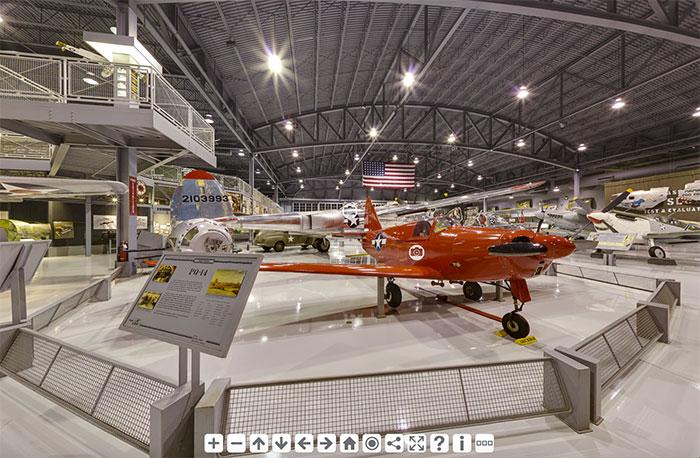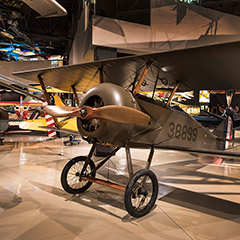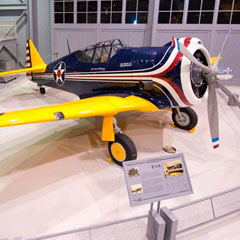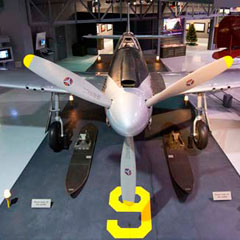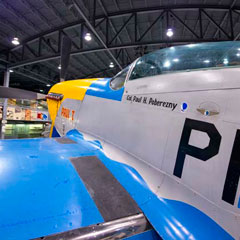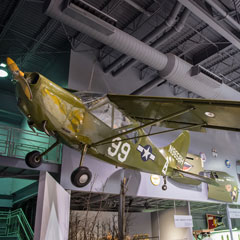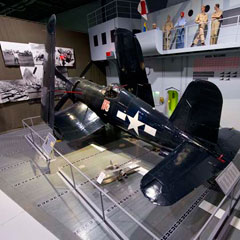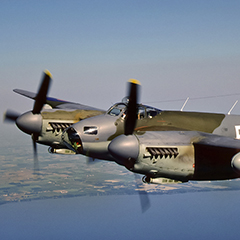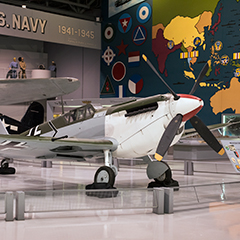World War II was the most destructive conflict in history, taking the lives of over 10 million Allied servicemen and women, entangling more than 50 countries and costing a staggering $1.15 Trillion.
The Eagle Hangar is a hall of honor dedicated to the memory of those who served valiantly in that monumental struggle for freedom. The airplanes include examples of Allied fighters, bombers, liaison aircraft, trainers, Army and Navy aircraft, plus examples from Germany and Japan.
Click to Visit Interactive Virtual Tour
Visit our virtual tour of the Eagle Hangar. Use on your smartphone or desktop device and simply pan around with your fingers or mouse to see every detail in the cockpit. Use the navigation icons at the bottom to move, zoom, get information on the aircraft, or share. Click the camera icons on each airplane to jump into the cockpit. Click the red hotspots to get back onto the ground tour of the Eagle Hangar. Click the white arrow on the floor to move throughout the hangar.
The dramatic mural on the Eagle Hangar's south wall depicts notable American aircraft and all the Allied theaters of war. Spanning 120 feet, it allows the viewer to see at a glance the vastness of this global conflict.
The Eagle Hangar also contains a temporary exhibit gallery, a Ready Room "immersion theater" plus an extraordinary scale model of the aircraft carrier U.S.S. Enterprise (CV-6). Constructed by 45 modelers from across the nation, it features 58 aircraft, over 500 scratch-built figures and remarkable detailing.
